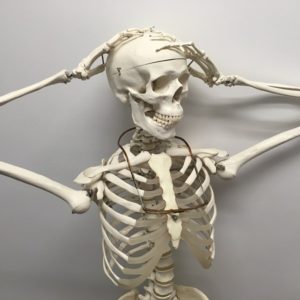 I had a discussion with a patient this week, who works in Barangaroo. He has been suffering from a challenging kind of foot pain. Having had different doctors describe his scans and diagnosis to him, he was a bit confused and I could understand why. He had heard one doctor say a bone was broken, but another said it wasn’t. His x-ray looked normal but his MRI showed something wrong. What he has is what’s called a “bone stress reaction.” Today I want to share what I discussed with this patient.
I had a discussion with a patient this week, who works in Barangaroo. He has been suffering from a challenging kind of foot pain. Having had different doctors describe his scans and diagnosis to him, he was a bit confused and I could understand why. He had heard one doctor say a bone was broken, but another said it wasn’t. His x-ray looked normal but his MRI showed something wrong. What he has is what’s called a “bone stress reaction.” Today I want to share what I discussed with this patient.
Bone Basics
While we often picture bones as hard, dry things, they are very much living tissue. They’re made up of cells that are constantly working to rebuild themselves; much like muscle, skin or just about anything else we’re made of. And amazingly bones can adapt, so that when you load them up more (such as through weight-bearing or impact exercise) they gradually strengthen. Or if for some reason you don’t load the bone much for a while, maybe from a period of illness or rest, your bones will gradually reduce in strength.
The Classic Broken Bone
There are two main kinds of bone injury. The first you all definitely know of. This is where something sudden has happened that has been strong enough to physically damage that particular bone, immediately, in one go. So a fall, usually. Or if you’re unlucky a crush, a twist or a really good solid whack. All of which can suddenly be too much for that bone to handle, causing it to break in a brittle way. If you were to take a basic x-ray, you can usually see the break in the bone. Medically we call all breaks in the bone “fractures” whether they are big, small, a crack, a chip of the edge or anything else.
Thankfully, bones are good at healing. Fractures like this will require some form of immobilisation, some rest and then very cleverly your body fills in the broken section with new bone and you can gradually get back to normal.
What Is A Bone Stress Injury?
This is about something gradual. Rather than something sudden like a fall, here the bone is having too much strain placed upon it repeatedly over time. If the amount of strain is more than it can handle, the bone starts to suffer. If you continue to put more stress on the bone than it can handle, the bone will continue to complain. This comes in the form of pain, but it is not always painful right away.
Stress Reaction vs Stress Fracture
We’re getting into the nitty-gritty now. These are the two terms used for bone stress injuries. “Stress reaction” is the term we use when a bone is suffering but hasn’t physically broken (at least not in a way that can be seen.) On x-ray, the bone will appear normal. But an MRI is very useful as it will show up swelling, either around a bone or inside the bone marrow.
A stress reaction is really the precursor to a stress fracture, which is worse. If a person with a stress reaction were to give the bone some rest, it will continue to adapt and heal and gradually return to normal happy bone, with the pain and swelling reducing over time. Stress fracture avoided! However if that person were to continue putting stress through the bone, then the strength of the bone continues to worsen and can eventually break (in a way that can be seen on a scan.) This usually stops a person in their tracks much like a traumatic fracture. Yes, the bone is likely to heal if rested but it may take a long time if it reaches this stage.
General Bone Health
It’s also possible that a person’s bone may become more prone to injury because there’s something going on with their general health. Poor bone health can be due to certain diseases, prolonged use of oral corticosteroid medication, being a smoker or in women, menstrual, hormonal or nutritional irregularities, or even pregnancy.
How Your Physiotherapist Will Help
As Physiotherapists, we are good people to help you assess and manage bone stress injuries.
- Whether you have a traumatic fracture, a bone stress injury or something else entirely.
- Refer you for the most appropriate scans and help you understand the results.
- If you have a bone stress injury, determine where on the continuum you are, and devise a plan for what you need to do.
- If we suspect general bone health is involved, we will refer you to your GP or a Sports Physician. We may seek a specialist opinion if the injury is more complicated or dangerous.
Take Home Messages
So remember, if your issue started with something sudden like a fall or an accident, then it’s pretty clear. Either you have a broken bone of you don’t. But if you have pain without having had something sudden, you may still have a bone injury through gradual strain or health reasons. Remember that x-rays are generally good for sudden injuries but will often not show stress injuries. MRI is usually the best test for these. But make sure you are referred for your scans by your Physiotherapist or someone with a good understanding of these conditions, so that they can tell the radiologist what to look for.
Remember if you have pain arising from an impact sport or from pounding the pavement around Barangaroo, it may be due to a bone injury and you should always get it checked out to minimise the risk of it progressing to a serious problem.





